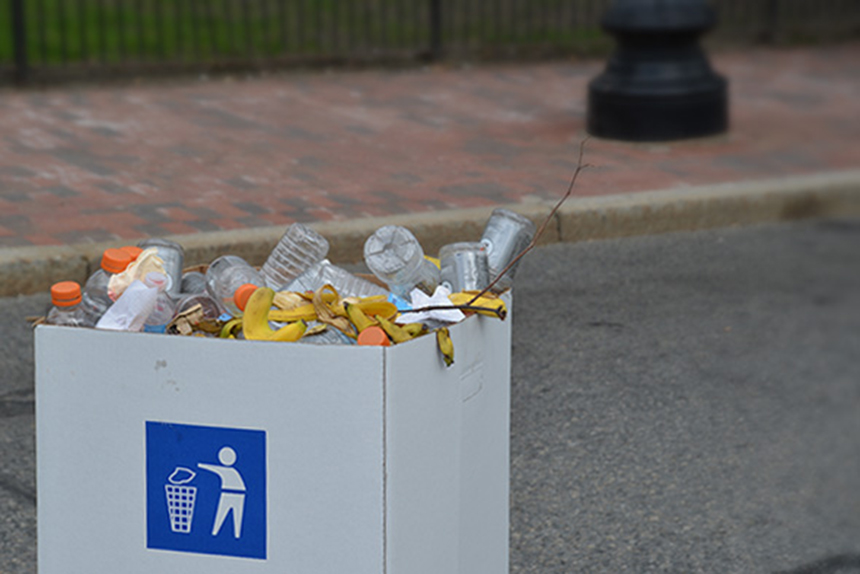Using Worms to Keep Kitchen Waste to a Minimum
March 3, 2014
Now, five years later, that deli pint container is a 14-gallon Rubbermaid bin that holds tens of thousands of worms, and anytime the temperature drops below 32 degrees Weinberger brings their home into hers.
“I never thought I’d be bringing worms into my house,” she said. “I know they’re not pets, but they are kind of part of the family.”
Vermicomposting is simple to set up and the maintenance is minimal. The worms do all the work. In fact, vermicomposting is one of the most satisfying types of recycling, based on the fact that unlike, say, plastic bottles, you can actually witness the process.
The Weinberger’s red wigglers dine regularly on vegetable and fruit scraps. No onions or citrus, and nothing cooked. And since the three-member family is vegetarian, so are the worms. Neighbors occasionally bring by coffee grounds. Red wigglers also will dine on pet hair, tea bags and eggshells. Avocado pits take some time to be eaten.
Worm-based composting reduces the amount of valuable food scrap that is buried or burned. Without the worms, the Weinberger family’s trash bin would be making more frequent trips to the curb. A pound of red wigglers will eat between 1.5 and 2 pounds of food scrap a week.
The Environmental Protection Agency (EPA) estimates that each American throws away an average of 1.3 pounds of food scrap daily. The combination of this wasted material, along with yard trimmings, makes up 24 percent of the country’s municipal solid waste stream.
Composting via worms, however, accomplishes much more than reducing how many times you have to drag your trash bin to the curb. The process also produces nutrient-rich plant food.
Vermicompost is a heterogeneous mixture of decomposing food scrap, worm castings (worm manure) and bedding materials — damp shredded newspaper and coconut coir work best. This nutrient-rich mixture reduces the need for chemical fertilizer.
Weinberger uses vermicompost on her potted vegetable plants. “It’s some of the richest, best soil I’ve ever seen,” she said. In fact, her worms are so prodigious in their vermicompost production that Weinberger gives much of her black gold away to neighbors.




Using worm bins and composting in general are valuable things to do. I've been composting for a long time. But maybe EcoRI could do an article on why NOT to put worms or ANY yard waste into the woods, abandoned fields, roadsides, etc. There are no native worms in RI due to their having been removed by glaciers. Our woodlands have developed on soil that was never decomposed by worms, and our native plants, trees and soil organisms, insects, amphibians etc are less able and in some cases unable to thrive in soil affected by earthworms. In addition there is an earthworm genus that is spreading throughout the US which is considered truly invasive, even in our gardens and lawns. The various Amynthas species, also known as Jumper Worms, Jersey Wrigglers or Snake Worms eat more and faster than other species of worms. WE who compost with worms need to be very specific about the type of worms we ask for and receive. Wrigglers- fine in our indoor bins and yards. Others? Maybe not. Here's a link to a pdf from Connecticut with excellent information: CT Invasive Worms vers 10 4 11. http://www.harringtonsorganic.com/…/CT-Invasive-Worms-vers-10-4-11.pdf You can do a search for this if the links don't work.